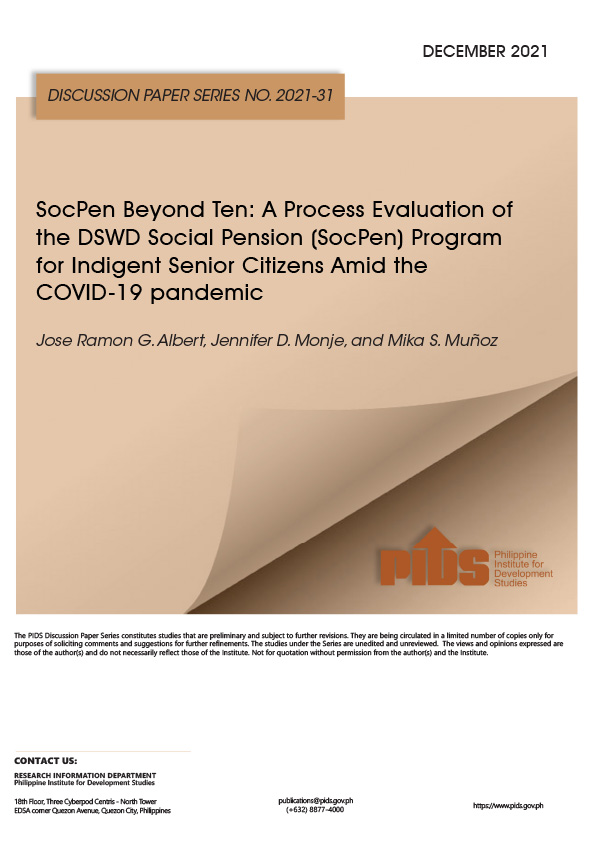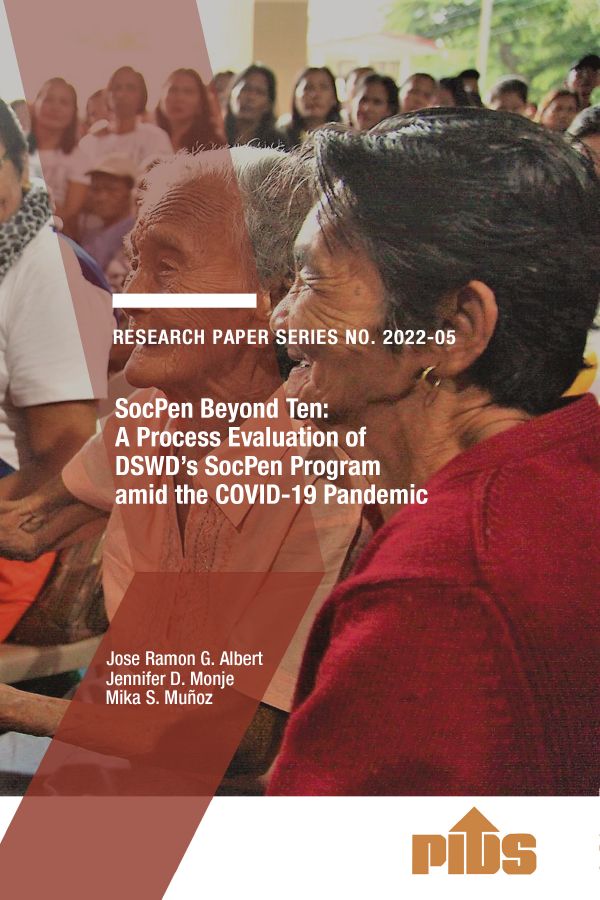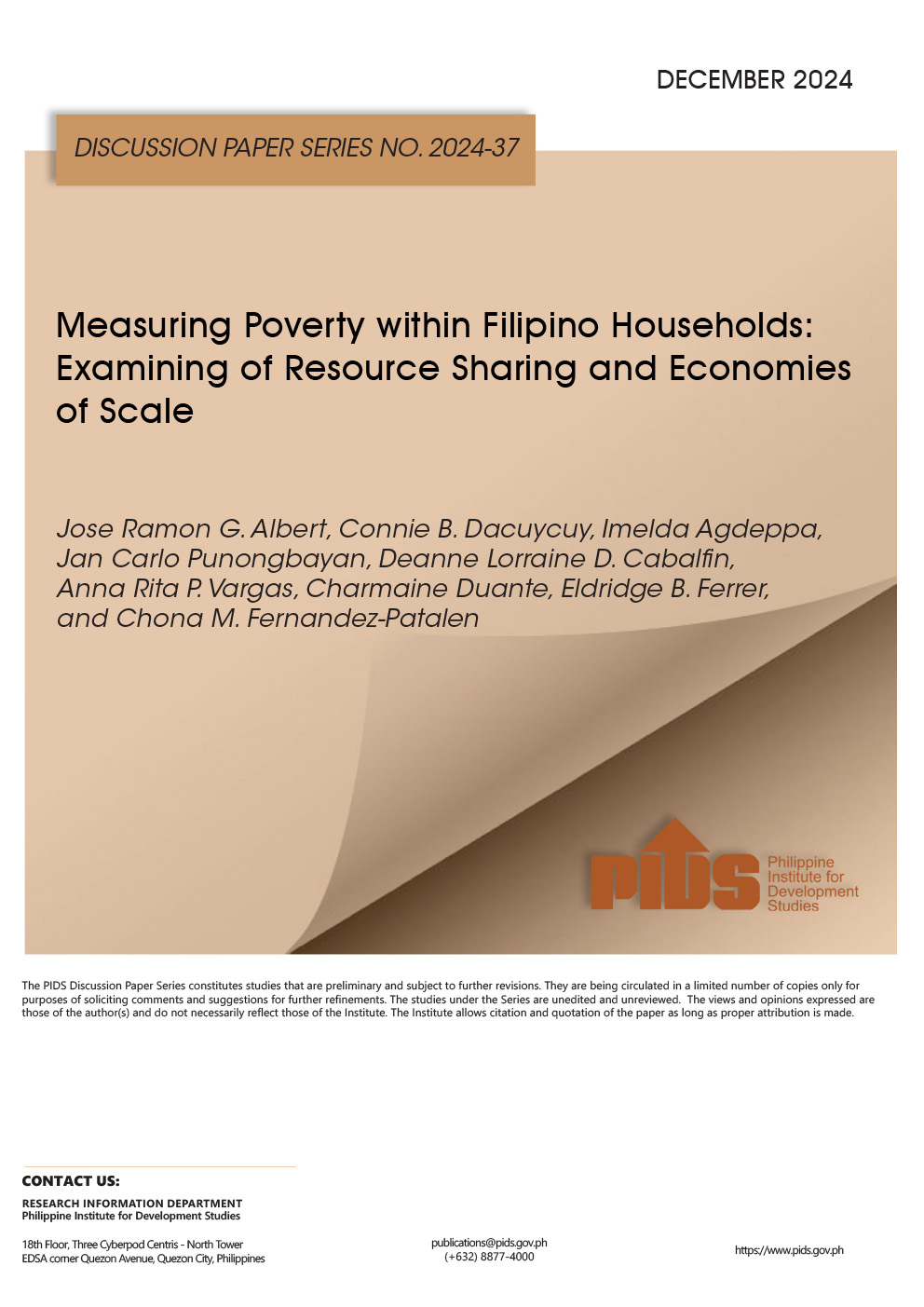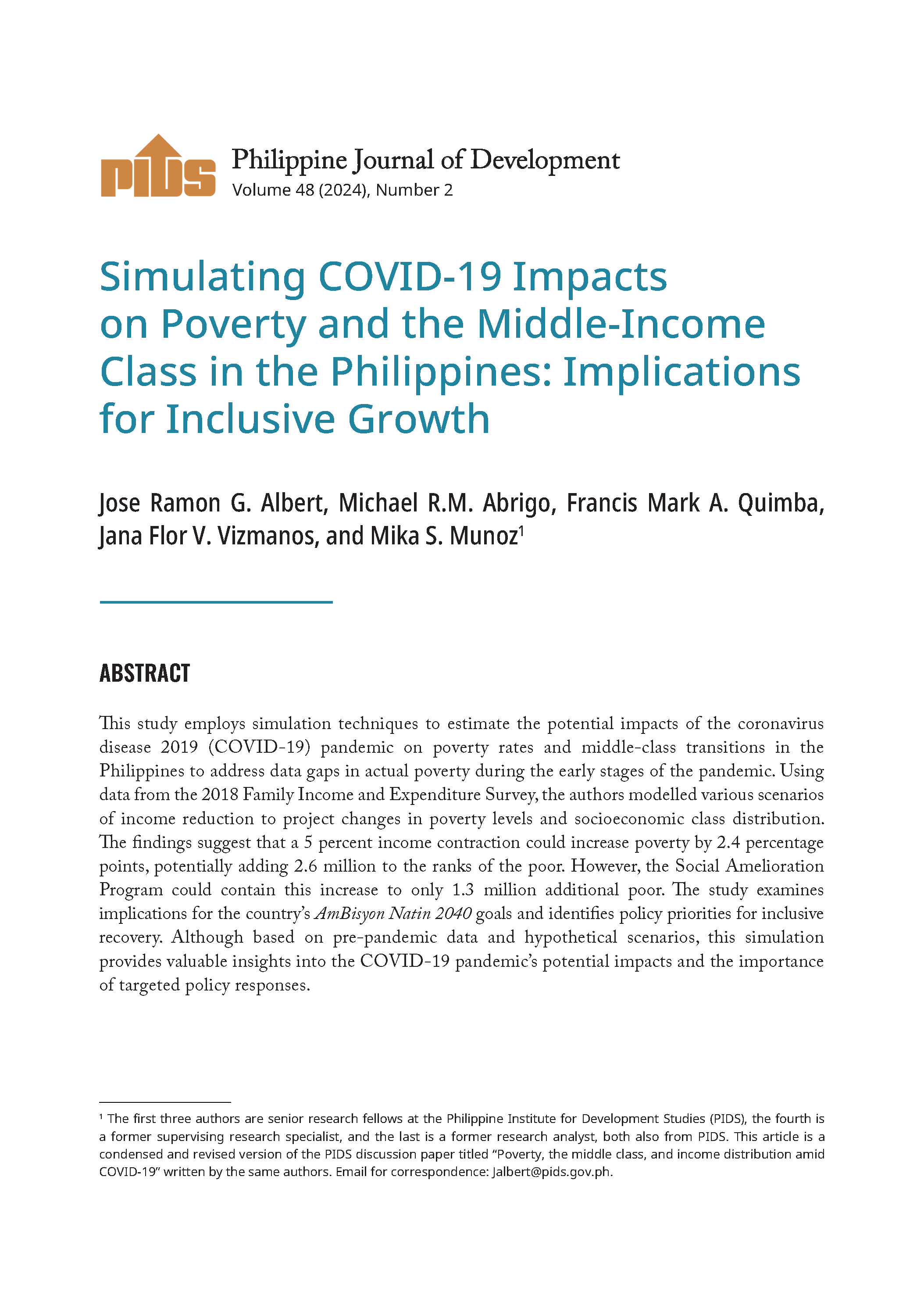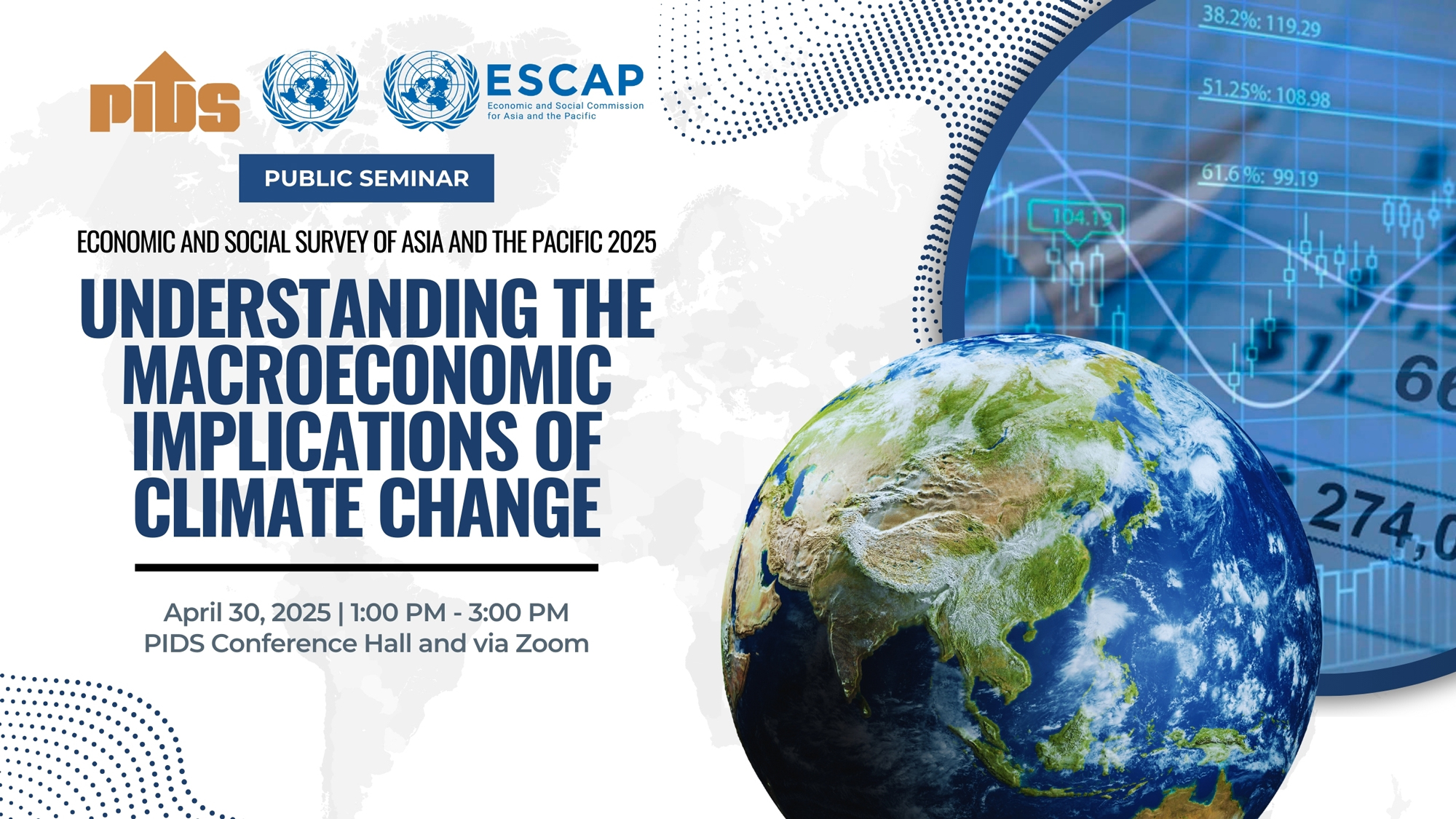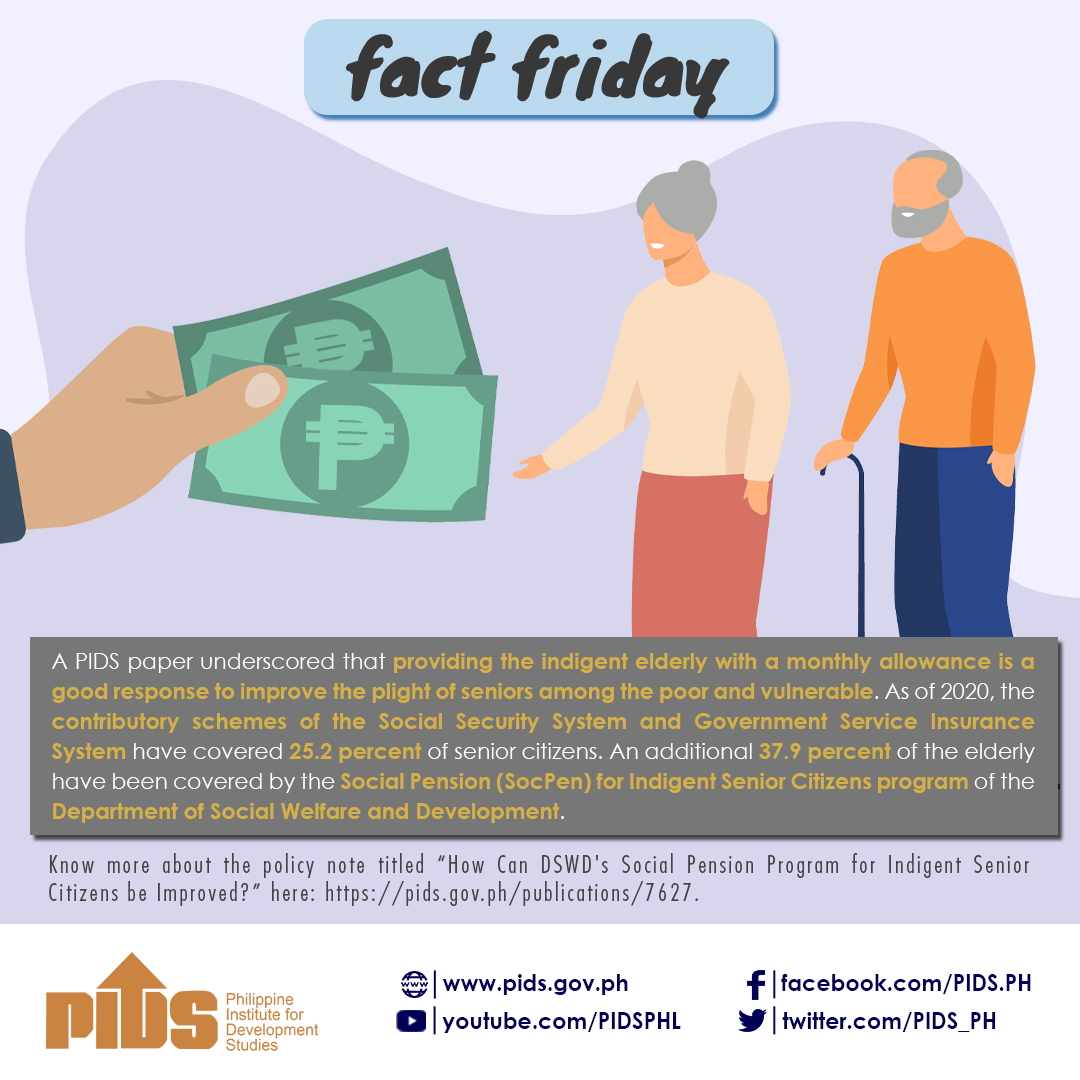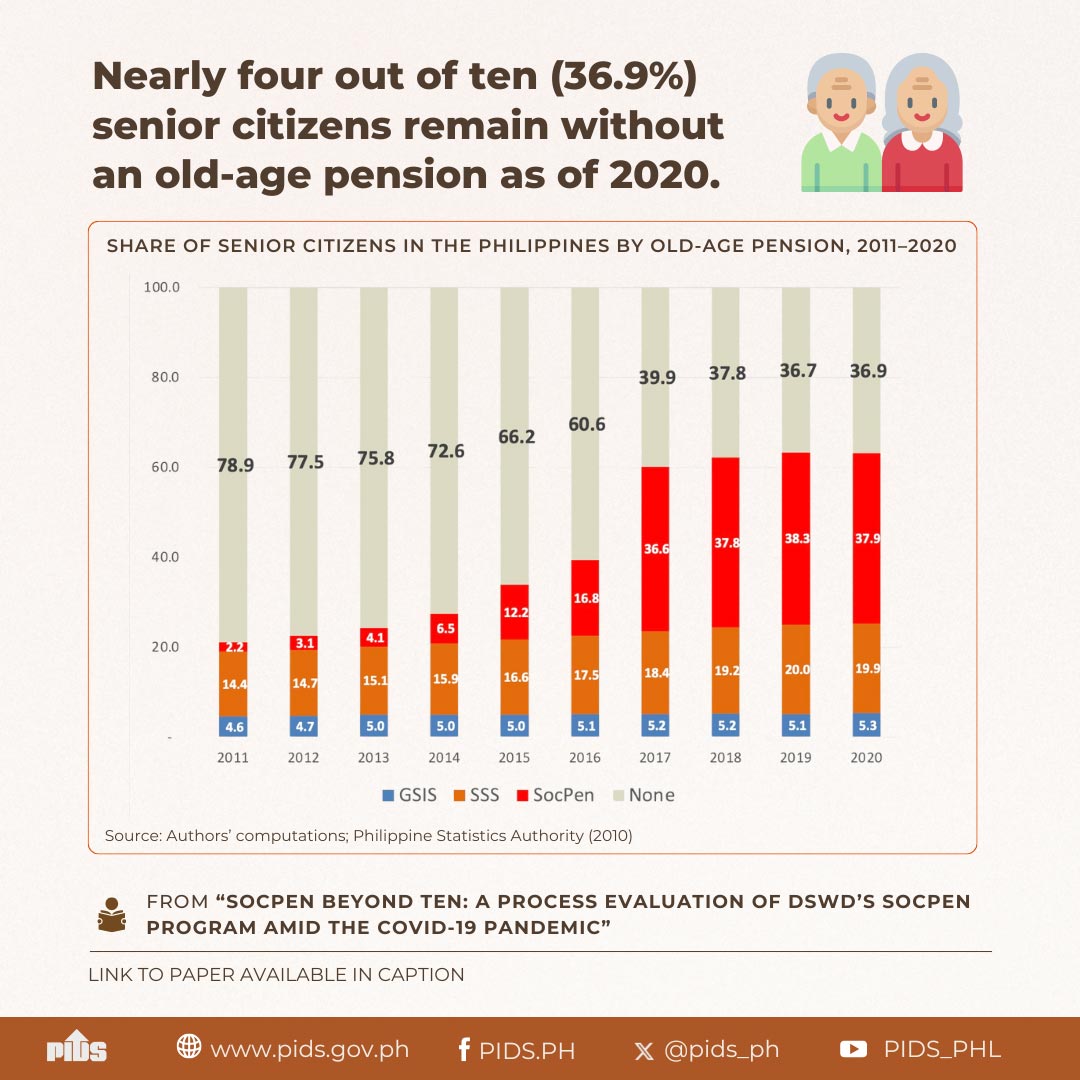Since 2011, the government, through the Department of Social Welfare and Development (DSWD), has implemented the Social Pension (SocPen) Program which gives a noncontributory monthly pension of PHP 500 to qualified seniors, i.e., indigent Filipinos aged 60 and above. Initially, the DSWD had sought to provide assistance to 1.2 million indigent senior citizens identified by the Listahanan, on a PHP 8.71 billion budget allocation. Insufficient funds had prompted the department to realistically target only 138,960 seniors at program inception, though the actual served were 140,576 senior citizens with an actual budget of PHP 843.5million. Budget allocation for the SocPen has increased exponentially since program inception to over PHP 23.4 billion in 2021. With this 2,540 percent jump of a budget in a span of 10 years, the 2021 physical target has also increased to 3,835,066 senior citizens, a 2,634 percent increase. The 2020 physical target for SocPen is nearly two-fifths (37.8%) of senior citizens. This study describes the SocPen’s design and current implementation processes, especially in the wake of Covid-19, and attempts to increase the financial assistance and coverage of beneficiaries. The examination will also look into the recent experience of DSWD with the Social Amelioration program, which included cash transfers for SocPen beneficiaries and other vulnerable populations. While overall the program is well-intentioned and is welcomed by seniors, and the SocPen has undergone some changes in response to criticisms of several external evaluations, implementation deficits persist. These need to be addressed, especially as the SocPen is currently one of the largest social protection programs of the government, and has the potential to significantly impact the lives of elderly indigent beneficiaries.
Comments to this paper are welcome within 60 days from the date of posting. Email publications@pids.gov.ph

